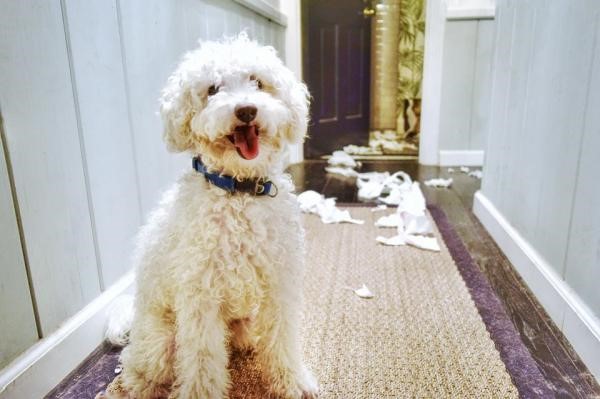
Indice
Separation anxiety is one of the most recurrent problems in the canine world, and one of those that most affects the emotional well-being of the furry ones at home. The manifestation of separation anxiety in dogs responds to various causes and can appear in any of the stages of a dog’s life, being especially difficult to treat in adult dogs. The care and treatment of this disorder must be carried out with the utmost patience, perseverance and interest on the part of the owner, because getting it to leave the dog’s life is an arduous task that requires total commitment on the part of the person. It is important to be aware of some of the 3 ideas for helping a dog with separation anxiety.
Causes and characteristic symptoms of separation anxiety in dogs
The reasons that trigger this disorder may vary slightly from dog to dog, but these always tend to have their origins in premature weaning, abandonment, prolonged stay in kennels or shelters; changes in daily routine, moving house, the departure of a family member, the most valued human or humans suddenly spending more hours away from home; experiencing a traumatic experience from a particular event or noise when the animal was left home alone. When the dog begins to develop separation anxiety, it presents certain symptoms before and after the departure of its human, among these symptoms are destructive behavior with elements of its environment (including doors and walls), excessive vocalizations (barking, howling, whining); urinating or defecating inside the house, vomiting or salivating excessively. Apart from this, some dogs stop drinking water or eating during their human’s absence, as well as ignoring their toys.
Ideas to help with separation anxiety in dogs
Initiate treatment
treatment with a canine ethologist or with a specialized educator to overcome separation anxiety indogs is
separation anxiety in dogs is fundamental, however, there are some ideas and tricks that the person can implement in their day to day life to help with the improvement of their canine:
- Spending extra time with your furry companion: this not only refers to increasing the hours of play and daily activity of the dog, but also that the person takes advantage of this extra time to find the cause behind the onset of the disorder. Many times due to lack of interaction the owner may overlook a key detail for their pet’s well-being, something that can be corrected with a few extra minutes a day.
- Environmental enrichment and stimulation: environmental enrichment is not always effective in all cases, but it is a very useful tool to redirect the dog’s energies and release his tension. Creating a relaxed and safe environment for the dog should be combined with toys that stimulate the dog’s mind, such as Kong toys, to ensure that the dog can be distracted when alone.
- Supplements: behavior modification techniques approved by specialists are used to treat separation anxiety . During this process, the use of synthetic pheromones is recommended to lower the animal’s anxiety levels and achieve better learning. Although drugs can be used, they are only allowed for the strongest cases and with the authorization of a veterinarian, with pheromones being the best option to avoid side effects.
Image courtesy of (www.expertoanimal.com), all rights reserved.







